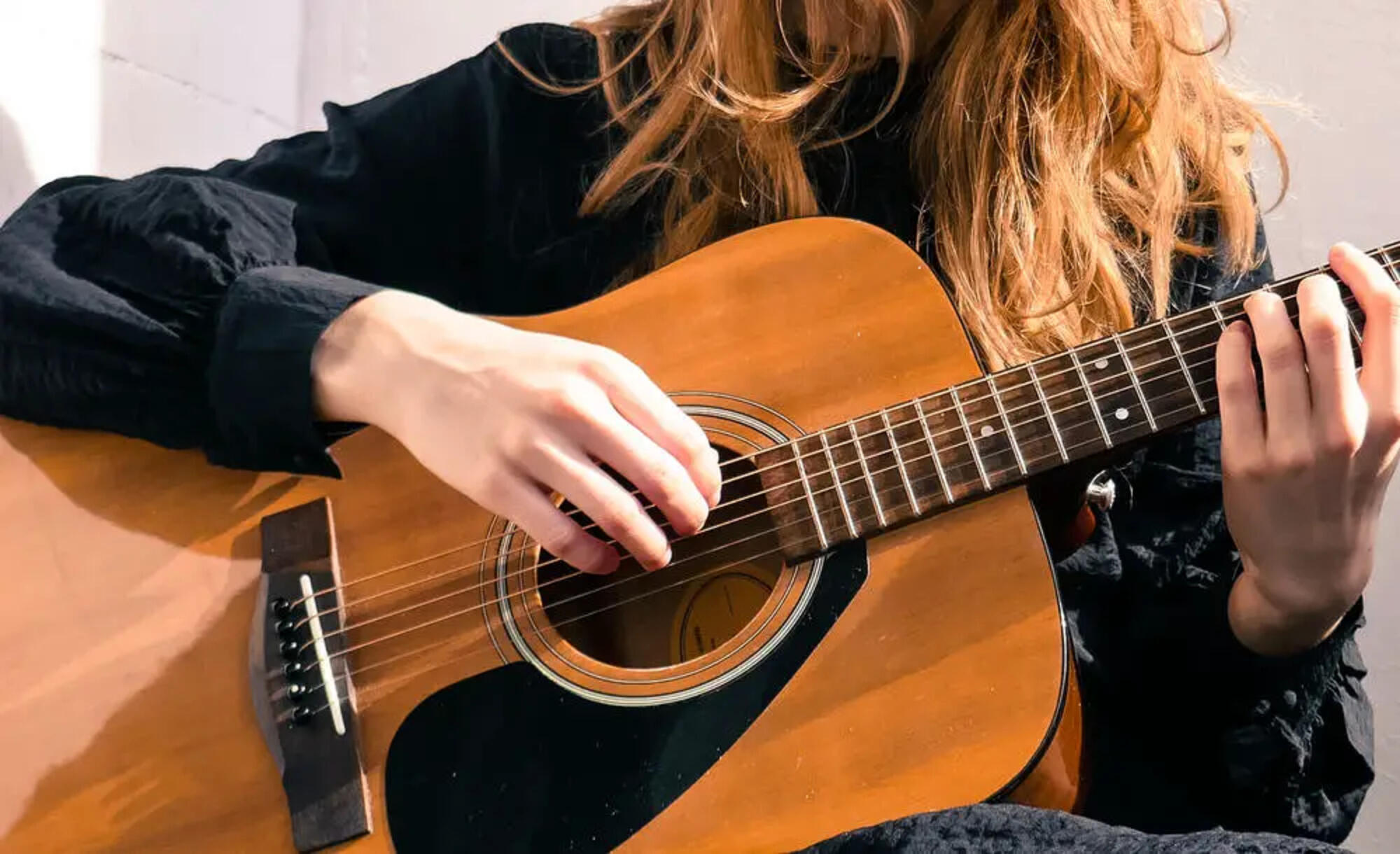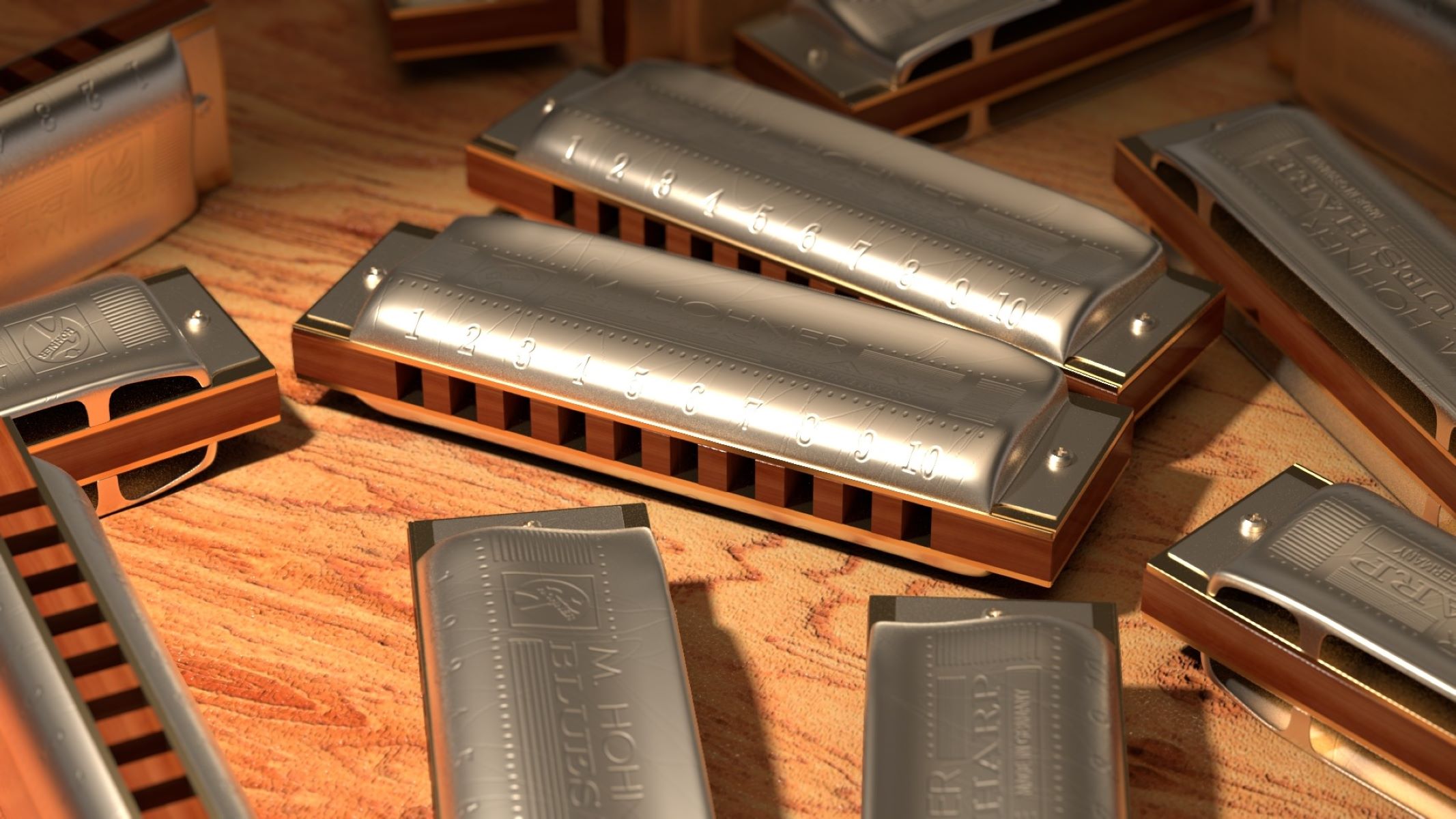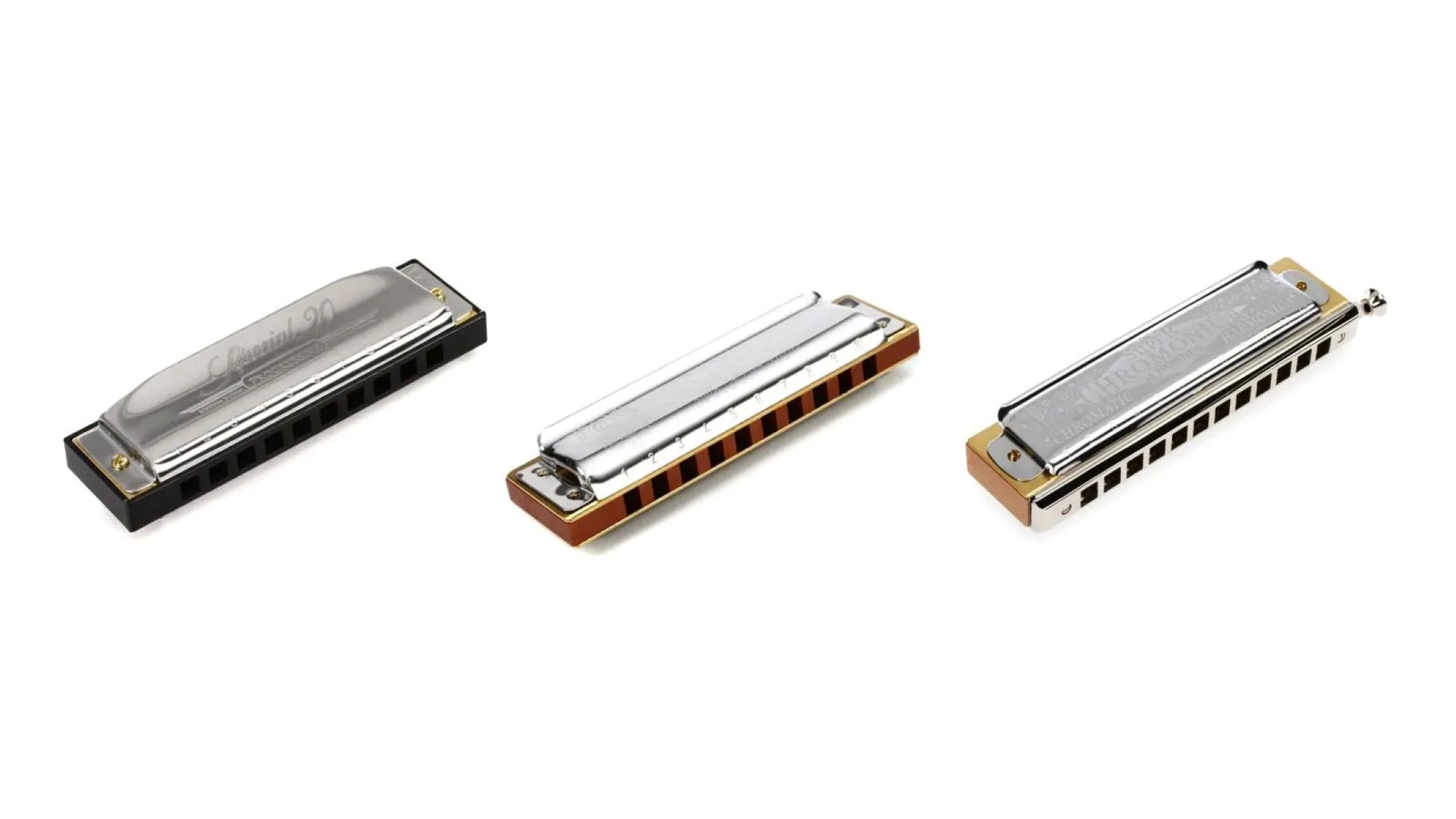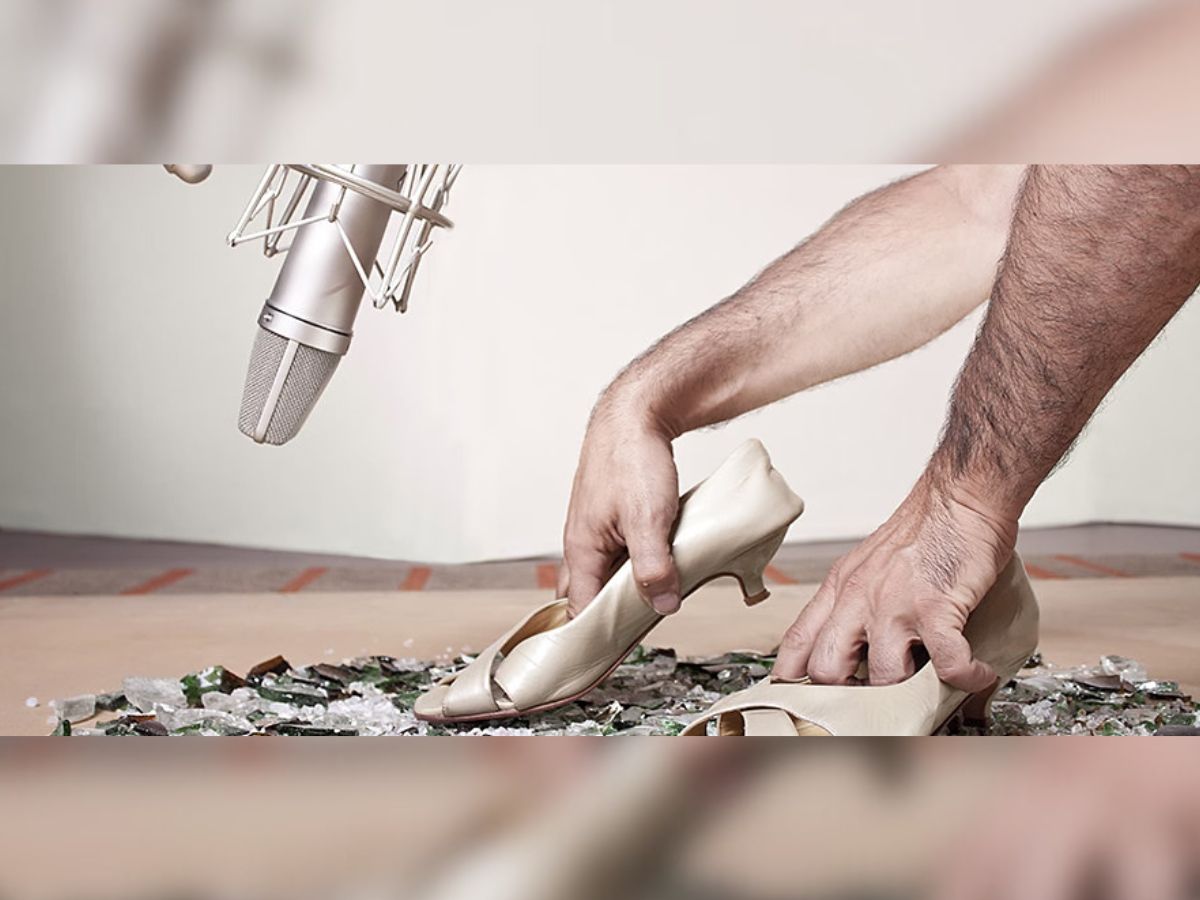Home>Instruments>Harmonica>What Sound Does A Harmonica Make


Harmonica
What Sound Does A Harmonica Make
Modified: February 3, 2024
Discover the enchanting sound of a harmonica with our comprehensive guide. Explore the various tones and melodies this versatile instrument can produce.
(Many of the links in this article redirect to a specific reviewed product. Your purchase of these products through affiliate links helps to generate commission for AudioLover.com, at no extra cost. Learn more)
Table of Contents
Introduction
The harmonica is a small, handheld musical instrument that has captured the hearts of millions of people around the world. Its simple design and unique sound make it a versatile and popular instrument in various genres of music, from blues and folk to rock and country.
The harmonica is also known as the mouth organ or harp and is played by blowing air into the instrument and manipulating the airflow to produce different sounds. Its compact size and portability make it a favorite instrument for musicians on the go, and its distinctive sound has contributed to its popularity and the immense impact it has had in the world of music.
In this article, we will take a deep dive into the world of the harmonica, exploring its history, structure and components, how it produces sound, the various types of harmonicas available, playing techniques, famous harmonica players, and popular songs that showcase the instrument’s unique sound.
So whether you’re a harmonica enthusiast looking to expand your knowledge or a curious music lover interested in learning more about this fascinating instrument, join us as we embark on a harmonica journey that will enchant and inspire.
History of the Harmonica
The origins of the harmonica can be traced back thousands of years. The earliest evidence of a similar instrument dates back to ancient China, where a free-reed instrument called the sheng was invented. The sheng consisted of a series of vertical pipes with bamboo reeds, and it is believed to have served as the precursor to the modern harmonica.
Fast forward to the early 19th century, and the harmonica as we know it today started to take shape. Christian Friedrich Buschmann, a German clockmaker, is credited with developing the first harmonica in 1821. His design consisted of a row of metal reeds attached to a wooden frame, and it was named the “Aura,” later renamed the “Mundharmonika.”
The harmonica’s popularity quickly spread throughout Europe, and it was embraced by musicians and the general public alike. It found its way into various musical genres, including classical, folk, and popular music. By the mid-19th century, several manufacturers were producing harmonicas, and the instrument’s design continued to evolve.
In the late 19th century, Matthias Hohner, a German clockmaker, established the Hohner company, which would become a leading harmonica manufacturer. Hohner made significant contributions to the harmonica’s design, including the addition of piano-like keys and airtight construction, making the instrument easier to play and producing a more vibrant sound.
The harmonica’s popularity soared in the early 20th century, particularly in the United States, where it became a staple in blues and folk music. Legendary blues musicians like Sonny Terry and Little Walter showcased the harmonica’s soulful and expressive capabilities, elevating its status in the music world. The harmonica’s distinctive sound also found its way into other genres, such as country, rock, and even jazz.
Over the years, the harmonica has continued to evolve with new designs and innovations. Today, there is a wide variety of harmonicas available, ranging from diatonic and chromatic harmonicas to tremolo and octave harmonicas, each with its own unique sound and playing style.
As the harmonica’s popularity persists, it remains an instrument beloved by musicians and music enthusiasts worldwide, capable of conveying emotions, telling stories, and adding a touch of magic to any musical performance.
Structure and Components of a Harmonica
At first glance, a harmonica may appear to be a simple instrument, but its compact and ingenious design houses several crucial components that work together to produce its mesmerizing sound.
A harmonica consists of three main parts: the comb, reed plates, and cover plates.
The comb is the main body of the harmonica, typically made of wood, plastic, or metal. It is responsible for holding the reed plates in place and providing a structure for the instrument. The comb is usually shaped like a rectangular or curved piece with multiple air chambers, also known as chambers or slots.
The reed plates are thin metal strips attached to the comb, usually made of brass or stainless steel. Each reed plate contains multiple reeds, which are thin metal strips that vibrate when air passes through them. The reed plates are mounted on each side of the comb, with the reeds facing inward, towards the chambers.
Cover plates, typically made of metal or plastic, are attached to the top and bottom of the comb. The cover plates protect the reed plates and provide a smooth surface for the player’s mouth. On the cover plates, there are openings called air channels or vents that allow air to enter and exit the chambers, creating the necessary airflow for sound production.
In addition to these main components, harmonicas also have a few other crucial elements. One of them is the mouthpiece, located at one end of the harmonica. The mouthpiece is designed for the player to place their mouth and control the airflow into the instrument. It is often curved or rounded for a comfortable playing experience.
Another important component is the slide button, which is present in certain types of harmonicas like chromatic harmonicas. The slide button, located at the side of the harmonica, allows the player to alter the pitch by redirecting the airflow to different chambers, giving the harmonica a wider range of notes.
Finally, many harmonicas also have covers on both ends, which provide additional protection and enhance the aesthetics of the instrument.
Overall, the structure and components of a harmonica are carefully designed to ensure precise airflow control, reed vibration, and sound production. The combination of these elements, along with the skills and techniques of the player, results in the beautiful and expressive music that the harmonica is known for.
How a Harmonica Produces Sound
The harmonica’s enchanting sound is generated through a fascinating combination of airflow, reed vibration, and resonance. Understanding how these elements work together can provide insight into the mechanics behind the instrument’s unique sound.
When a player blows or draws air into the harmonica, the airflow enters the chambers through the openings on the cover plates. Each chamber contains reeds mounted on reed plates, which are thin metal strips. The reeds act as small, flexible sound generators.
As the air flows through the chambers, it encounters the reeds. The reeds are designed to be partially obstructed by the reed plates, creating a narrow gap for the air to pass through. When the player blows or draws air, the airflow causes the reeds to vibrate rapidly, producing sound waves.
The pitch of the sound is determined by the length, thickness, and tension of the reeds. Longer, thicker, and less tense reeds produce lower pitches, while shorter, thinner, and more tense reeds produce higher pitches.
It’s important to note that harmonicas typically have two reeds for each note, one for blowing and one for drawing. Each reed is tuned slightly differently so that when a player blows or draws air, they can produce both a inhaling and exhaling note in a single hole.
As the reeds vibrate, the sound waves resonate within the chambers of the harmonica. The size and shape of the chambers, as well as the materials used in the harmonica’s construction, contribute to the resonant qualities of the instrument. This resonance amplifies the sound and gives it its distinctive timbre.
The player’s technique and breath control also play a significant role in shaping the sound produced by the harmonica. By altering the airflow, tongue placement, and embouchure, the player can manipulate the pitch, tone, and dynamics of the sound.
Additionally, certain harmonica techniques, such as bending and vibrato, further enhance the expressive capabilities of the instrument. Bending involves changing the pitch of a note by altering the shape of the oral cavity and adjusting the air pressure. Vibrato, on the other hand, entails adding subtle variations in pitch to create a wavering effect.
Overall, the harmonica’s sound production is a remarkable interplay between the player’s breath control, the vibrating reeds, and the resonating chambers. It is this combination that gives the harmonica its unmistakable and captivating sound, making it a cherished instrument in the world of music.
Types of Harmonicas
The harmonica comes in various types, each offering its own unique characteristics and playing style. Whether you’re a beginner or an experienced player, understanding the different types of harmonicas available can help you choose the instrument that best suits your musical preferences and needs.
1. Diatonic Harmonica: The diatonic harmonica, also known as the blues harp, is the most common type of harmonica. It is often associated with blues, folk, and country music. Diatonic harmonicas are designed to play in specific keys, typically allowing players to easily play melodies and simple chords within the chosen key. They have a single reed for each hole and are available in a wide range of keys.
2. Chromatic Harmonica: Chromatic harmonicas are versatile instruments that have a sliding button on the side. This button allows players to access all the notes of the chromatic scale, including sharps and flats. Unlike diatonic harmonicas, chromatic harmonicas have a button-activated sliding mechanism that redirects the airflow to different chambers, producing a wider range of notes.
3. Tremolo Harmonica: Tremolo harmonicas are known for their distinct, wavy sound. They are designed with double holes and double reeds for each note, creating a chorus-like effect when played. Tremolo harmonicas are commonly used in folk music and add a rich, vibrant texture to a musical arrangement.
4. Octave Harmonica: As the name suggests, octave harmonicas produce notes that are one or two octaves apart. They have two reeds for each note, one tuned to the fundamental pitch, and the other tuned to the octave above. Octave harmonicas are often used in traditional music styles, such as Celtic and folk, and are prized for their unique sound.
5. Bass Harmonica: The bass harmonica is a large harmonica that produces deep, low-pitched sounds. It is primarily used in orchestral compositions and adds a rich bass foundation to the musical ensemble. Bass harmonicas typically have two or three octaves of range and require a different playing technique due to their size.
6. Other Variations: Aside from the main types mentioned above, there are other variations of harmonicas, including the chord harmonica, which is designed for playing chords, and the subcontrabass harmonica, which produces incredibly low frequencies.
Each type of harmonica offers a unique playing experience and lends itself to different musical genres and styles. It’s worth exploring and experimenting with different types to find the one that resonates with your musical preferences and provides the sonic range and capabilities you desire.
Techniques for Playing the Harmonica
Playing the harmonica involves more than just blowing or drawing air into the instrument. It requires mastering various techniques to create a range of expressive sounds and melodies. Here are some essential techniques to enhance your harmonica playing:
1. Single Notes: The ability to play single notes is fundamental to harmonica playing. This technique involves isolating and playing one note at a time by controlling the airflow and tongue placement. Mastering single notes allows you to play melodies, riffs, and precise musical phrases.
2. Bending: Bending is a technique used to alter the pitch of a note. By changing the shape of your oral cavity and adjusting the air pressure, you can create subtle pitch variations that give the harmonica a bluesy and soulful sound. Bending can be done both on blow and draw notes, and it adds expressiveness and emotion to your playing.
3. Vibrato: Vibrato involves adding a rapid and slight variation in pitch to a sustained note, creating a wavering effect. It adds depth and character to your playing, allowing you to infuse your melodies with a touch of warmth and vibrancy.
4. Tongue Blocking: Tongue blocking is a technique that involves using the tongue to block or cover multiple holes at once. By strategically positioning your tongue, you can create chordal sounds, tongue slaps, and various articulations. Tongue blocking provides more control over the notes and allows for more advanced techniques like octaves and chordal playing.
5. Overblowing and Overdrawing: Overblowing and overdrawing are advanced techniques that allow you to play additional notes beyond the standard range of the harmonica. These techniques involve controlling the air pressure and reed response to produce higher or lower pitches, expanding the harmonica’s tonal capabilities.
6. Rhythmic Techniques: Expanding your rhythmic playing skills can add flair and dynamics to your harmonica performance. Techniques like tongue slaps, tongue switches, and hand effects on the cover plates can help you create percussive and rhythmic elements alongside the melodies.
7. Scale and Chord Playing: Learning scales and chords on the harmonica opens up the possibilities for improvisation and playing accompaniments. Practice playing diatonic scales and chords in different keys to familiarize yourself with the layout of the harmonica and how to construct harmonies.
8. Dynamic Control: Experiment with varying the volume and intensity of your playing to add depth and expression. Practice playing softly (pianissimo) and loudly (fortissimo) to create a contrast between different parts of your performance, enhancing the emotional impact of your music.
Remember, mastering these techniques takes time and practice. Start with the basics and gradually incorporate more advanced techniques into your playing. Listen to recordings by skilled harmonica players for inspiration and guidance, and don’t be afraid to experiment and develop your own unique style.
Famous Harmonica Players
The harmonica has been embraced by countless talented musicians who have mastered the instrument and left an indelible mark on the world of music. Here are just a few of the famous harmonica players who have captivated audiences with their skill and artistry:
1. Little Walter: Marion Walter Jacobs, better known as Little Walter, was a blues harmonica player and singer who revolutionized the way the harmonica was played. His innovative technique and powerful playing style set new standards for harmonica players. Little Walter’s recordings, such as “Juke” and “My Babe,” remain iconic examples of harmonica mastery.
2. Sonny Terry: Known for his distinctive “whooping” and energetic style, Sonny Terry was a highly influential blues harmonica player. He used his harmonica to create soulful and expressive sounds, often accompanying other blues musicians with his harmonica virtuosity. His collaboration with guitarist Brownie McGhee produced many timeless blues recordings.
3. Toots Thielemans: Toots Thielemans was a Belgian jazz harmonica player and guitarist who brought the instrument into the world of mainstream jazz. His melodic approach, warm tone, and impressive improvisational skills made him a highly sought-after musician. Toots contributed to numerous notable recordings, including his iconic harmonica solos on the theme song of the movie “Midnight Cowboy.”
4. Stevie Wonder: While primarily known as a singer, songwriter, and multi-instrumentalist, Stevie Wonder is also an accomplished harmonica player. His melodic playing and soulful performances on songs like “Isn’t She Lovely” and “Fingertips Pt. 2” have solidified his reputation as one of the greatest musicians of our time.
5. Charlie McCoy: Charlie McCoy is a renowned harmonica player who has made significant contributions to country and folk music. His skillful playing and versatility have earned him widespread recognition and numerous accolades. McCoy’s harmonica solos can be heard on iconic recordings by musicians like Bob Dylan and Johnny Cash.
6. Kim Wilson: Kim Wilson is a contemporary blues harmonica player known for his exceptional technique and soulful playing. As the frontman of The Fabulous Thunderbirds, Wilson’s harmonica skills have graced numerous blues-rock compositions over the years. His powerful sound and dynamic performances make him a standout player among blues enthusiasts.
These are just a few of the many talented harmonica players who have made their mark on the music world. Each of them has contributed to the evolution of the harmonica and showcased the instrument’s incredible versatility and expressive capabilities.
Whether they have delved into the realms of blues, jazz, rock, or beyond, these harmonica players have left a lasting impact on the instrument’s role in contemporary music. Studying their techniques and listening to their recordings can offer inspiration and insights for aspiring harmonica players and music lovers alike.
Popular Songs Featuring the Harmonica
The harmonica has left an indelible mark on countless songs, adding a distinct and soulful sound to various musical genres. From blues and rock to folk and pop, the harmonica has played a starring role in numerous iconic songs. Here are just a few examples of popular songs that feature captivating harmonica performances:
1. “Heart of Gold” by Neil Young: This beloved folk-rock ballad features Neil Young’s heartfelt harmonica playing, adding a nostalgic and melancholic touch to the song. The harmonica melody weaves seamlessly with Young’s emotive lyrics, enhancing the song’s heartfelt and introspective mood.
2. “Piano Man” by Billy Joel: Arguably one of Billy Joel’s most well-known songs, “Piano Man” includes a memorable harmonica intro that captivates listeners from the first note. The harmonica’s plaintive tone adds depth and charm to the song, complementing Joel’s storytelling lyrics and melodic piano accompaniment.
3. “The Wizard” by Black Sabbath: This classic rock song showcases the harmonica prowess of Ozzy Osbourne. The harmonica riffs in “The Wizard” create a bluesy and mysterious atmosphere, contrasting with the heavier guitar-driven elements of the song. It’s a testament to the harmonica’s versatility in rock music.
4. “Blue Suede Shoes” by Carl Perkins: Known as one of the pioneers of rockabilly music, Carl Perkins incorporated the harmonica into his energetic performances. “Blue Suede Shoes” features a lively harmonica solo that complements the song’s catchy guitar riffs and playful lyrics.
5. “Don’t Think Twice, It’s All Right” by Bob Dylan: Bob Dylan is renowned for his harmonica playing, and “Don’t Think Twice, It’s All Right” is a prime example of his harmonica artistry. The harmonica adds a mournful and introspective quality to the song, enhancing the emotional impact of Dylan’s poignant lyrics.
6. “Runaround Sue” by Dion: This classic rock and roll hit from the 1960s features a vibrant harmonica solo that perfectly captures the spirit of the era. The harmonica’s infectious melody adds a playful and energetic element to the song, making it an enduring favorite.
7. “Blowin’ in the Wind” by Bob Dylan: Another iconic song from Bob Dylan’s repertoire, “Blowin’ in the Wind,” features Dylan’s signature harmonica playing. The harmonica serves as a soulful companion to Dylan’s thought-provoking lyrics, creating a powerful and timeless message.
8. “What I Like About You” by The Romantics: This upbeat and catchy rock song is notable for its infectious harmonica riff. The harmonica’s lively and energetic melody adds an irresistible element to the song’s infectious hook, making it an instant crowd-pleaser.
These are just a few examples of the many songs that showcase the harmonica’s versatility and ability to enhance the overall aesthetic of a musical composition. Whether it’s adding a touch of melancholy, injecting catchy riffs, or contributing to the overall energy, the harmonica continues to be a beloved instrument in popular music.
Conclusion
The harmonica, with its compact design and mesmerizing sound, has captivated music lovers around the world. From its humble origins to its prominence in various music genres, this handheld instrument has left an indelible mark on the music industry.
In this article, we’ve explored the history of the harmonica, delving into its early roots and the advancements that shaped its current form. We’ve examined the instrument’s structure and components, learning about the comb, reed plates, cover plates, and more. Understanding how the harmonica produces sound has provided insight into the magic behind its unique and soulful tones.
We’ve also covered different types of harmonicas, from the versatile diatonic and chromatic harmonicas to the tremolo and bass harmonicas. Each type offers its own distinct range of sounds and playing styles, catering to the preferences and musical genres of players.
Mastering techniques such as single notes, bending, vibrato, and tongue blocking allows harmonica players to fully express themselves. We’ve highlighted famous harmonica players who have pushed the boundaries and showcased the instrument’s incredible capabilities.
Lastly, popular songs featuring the harmonica have been explored, demonstrating how this instrument has become an integral part of countless musical compositions. From haunting melodies to catchy hooks, the harmonica adds depth, emotion, and a touch of magic to songs across a wide range of genres.
Whether you’re a beginner looking to embark on your harmonica journey or an experienced player seeking inspiration, exploring the rich history, techniques, and musical possibilities of the harmonica can open up new horizons and fuel creativity.
As you delve into the world of the harmonica, remember to embrace the instrument’s versatility, experiment with different playing styles, and develop your own unique sound. With dedication, practice, and a passion for the harmonica, you can create incredible music and continue the legacy of this remarkable instrument for generations to come.











